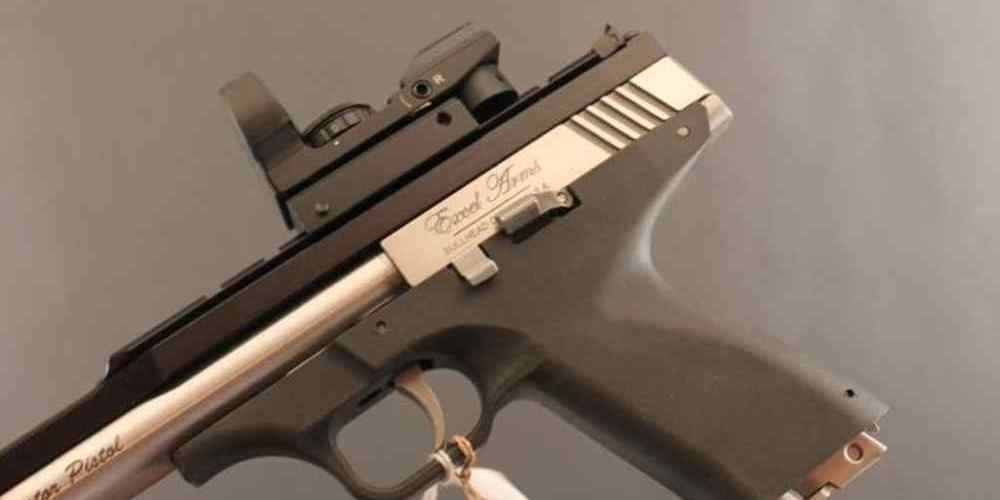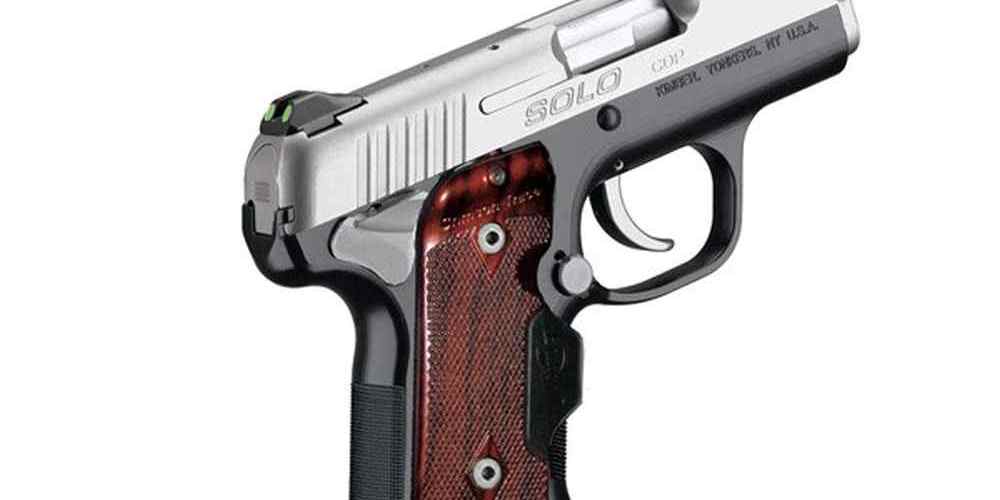“Empowering disabled shooters to adapt and overcome with semi-auto pistol training.”
Benefits of Semi-Auto Pistol Training for Disabled Shooters
Semi-automatic pistols are a popular choice for many shooters due to their ease of use and reliability. For disabled shooters, semi-auto pistol training can offer a range of benefits that can help them overcome physical limitations and enjoy the sport of shooting.
One of the key benefits of semi-auto pistol training for disabled shooters is the adaptability of these firearms. Many semi-automatic pistols feature adjustable grips, sights, and trigger pulls, allowing shooters to customize the gun to fit their specific needs. This can be especially helpful for disabled shooters who may have limited strength or mobility in their hands or arms.
In addition to being customizable, semi-automatic pistols are also known for their ease of operation. Unlike revolvers, which require shooters to manually cock the hammer and rotate the cylinder between shots, semi-auto pistols use a slide mechanism to automatically chamber a new round after each shot. This can be a major advantage for disabled shooters who may have difficulty manipulating the controls of a revolver.
Another benefit of semi-auto pistol training for disabled shooters is the increased capacity of these firearms. Most semi-automatic pistols have a higher round capacity than revolvers, allowing shooters to take more shots before needing to reload. This can be especially important for disabled shooters who may have limited dexterity or strength and need to conserve their energy during a shooting session.
Semi-auto pistols also offer a smoother shooting experience compared to revolvers. The recoil of a semi-auto pistol is typically more manageable, making it easier for disabled shooters to maintain control of the firearm and stay on target. Additionally, semi-auto pistols are often lighter and more compact than revolvers, making them easier to handle for shooters with limited strength or mobility.
Training with a semi-auto pistol can also help disabled shooters improve their shooting skills and confidence. By practicing with a semi-automatic pistol, disabled shooters can become more familiar with the operation of the firearm and develop their marksmanship abilities. This can be empowering for disabled shooters, helping them to overcome any doubts or fears they may have about their shooting abilities.
Overall, semi-auto pistol training can offer a range of benefits for disabled shooters, from increased adaptability and ease of operation to improved shooting skills and confidence. By taking advantage of the unique features of semi-automatic pistols, disabled shooters can adapt and overcome any physical limitations they may face, allowing them to enjoy the sport of shooting to its fullest.
Techniques for Adapting Pistol Training for Disabled Shooters
When it comes to firearms training, it’s important to remember that not everyone has the same physical abilities. For disabled shooters, adapting and overcoming challenges is key to successful training with a semi-auto pistol. With the right techniques and mindset, disabled shooters can still excel in their training and become proficient with their firearm.

One of the first things to consider when training disabled shooters with a semi-auto pistol is their grip. For shooters with limited hand strength or mobility, a traditional grip may not be feasible. In these cases, it’s important to explore alternative grip options that can provide a secure hold on the pistol. This may include using a grip assistive device or modifying the grip to better suit the shooter’s needs.
Another important aspect of training disabled shooters with a semi-auto pistol is stance. A proper shooting stance is crucial for accuracy and control, but for shooters with mobility issues, finding a comfortable and stable stance can be challenging. It’s important to work with the shooter to find a stance that works for them, whether that means modifying a traditional stance or exploring alternative options such as shooting from a seated position.
Trigger control is another key element of pistol training that may need to be adapted for disabled shooters. For shooters with limited finger dexterity or strength, pulling the trigger can be difficult. In these cases, it may be helpful to explore alternative trigger options, such as a lighter trigger pull or a trigger assistive device. It’s important to work with the shooter to find a solution that allows them to effectively control the trigger while maintaining safety and accuracy.
Sight alignment and sight picture are also important considerations when training disabled shooters with a semi-auto pistol. For shooters with visual impairments, finding the right sight setup can make a big difference in their accuracy. It may be helpful to explore options such as high-visibility sights or magnified optics to assist shooters with visual challenges. Additionally, it’s important to work with the shooter to ensure they have a clear understanding of how to properly align their sights and acquire a sight picture.
Finally, it’s important to remember that training disabled shooters with a semi-auto pistol is not just about adapting equipment and techniques – it’s also about fostering a positive and supportive training environment. Encouragement and patience are key when working with disabled shooters, as they may face unique challenges and frustrations during their training. By providing a supportive and inclusive training experience, disabled shooters can feel empowered to overcome obstacles and excel in their pistol training.
In conclusion, adapting and overcoming challenges is essential when training disabled shooters with a semi-auto pistol. By exploring alternative techniques, equipment, and approaches, disabled shooters can still achieve success and proficiency in their training. With the right mindset and support, disabled shooters can overcome obstacles and become skilled and confident pistol shooters.
Overcoming Challenges in Semi-Auto Pistol Training for Disabled Shooters
Semi-automatic pistols are a popular choice for many shooters due to their ease of use and reliability. However, for disabled shooters, training with a semi-auto pistol can present unique challenges. From limited mobility to reduced strength and dexterity, disabled shooters may face obstacles that can make traditional training methods difficult to navigate. Despite these challenges, with the right adaptations and techniques, disabled shooters can still excel in semi-auto pistol training.
One of the key challenges that disabled shooters may face is limited mobility. Whether due to a physical disability or injury, limited mobility can make it difficult to handle a semi-auto pistol effectively. To overcome this challenge, disabled shooters can focus on developing their shooting stance and grip to maximize stability and control. By adjusting their stance and grip to accommodate their mobility limitations, disabled shooters can improve their accuracy and consistency when firing a semi-auto pistol.
Another challenge that disabled shooters may encounter is reduced strength and dexterity. This can make it difficult to manipulate the slide, magazine, and other controls on a semi-auto pistol. To address this challenge, disabled shooters can explore alternative techniques and tools to assist with handling their firearm. For example, using a slide rack assist device or extended slide release can make it easier for shooters with limited strength to operate their pistol effectively.
In addition to physical challenges, disabled shooters may also face psychological barriers when training with a semi-auto pistol. The fear of not being able to handle the firearm safely or effectively can be a significant hurdle for some shooters. To overcome this challenge, disabled shooters can work with a qualified instructor who has experience training shooters with disabilities. By receiving personalized instruction and guidance, disabled shooters can build confidence and develop the skills they need to succeed in semi-auto pistol training.
Transitioning from traditional training methods to adapted techniques can be a daunting task for disabled shooters. However, with patience, practice, and perseverance, disabled shooters can overcome these challenges and excel in semi-auto pistol training. By focusing on developing their shooting stance, grip, and techniques, disabled shooters can improve their accuracy and consistency when firing a semi-auto pistol. Additionally, by exploring alternative tools and techniques to assist with handling their firearm, disabled shooters can overcome limitations in strength and dexterity.
Ultimately, the key to success in semi-auto pistol training for disabled shooters is adaptation and perseverance. By embracing their unique challenges and working to overcome them, disabled shooters can develop the skills and confidence they need to excel in training. With the right support, guidance, and determination, disabled shooters can adapt and overcome any obstacles they may face in their journey to becoming proficient with a semi-auto pistol.
Importance of Accessibility in Pistol Training for Disabled Shooters
When it comes to firearms training, accessibility is a crucial factor that should not be overlooked. For disabled shooters, finding ways to adapt and overcome physical limitations is essential in order to participate in pistol training effectively. Semi-auto pistols are a popular choice for many shooters due to their ease of use and versatility. However, disabled shooters may face unique challenges when it comes to handling and operating these firearms.
One of the key considerations for disabled shooters is finding a pistol that is well-suited to their individual needs and abilities. This may involve selecting a pistol with a lighter trigger pull, adjustable sights, or a more ergonomic grip. Additionally, disabled shooters may need to explore different shooting stances and techniques in order to find what works best for them. It is important for trainers to work closely with disabled shooters to identify any specific accommodations that may be necessary in order to ensure a safe and successful training experience.
In addition to selecting the right equipment, disabled shooters may also need to make modifications to their shooting technique in order to compensate for physical limitations. For example, shooters with limited hand strength may need to use a two-handed grip or employ alternative methods for racking the slide. Shooters with mobility impairments may need to experiment with different shooting positions in order to find what is most comfortable and effective for them. By working closely with trainers and fellow shooters, disabled shooters can develop strategies that allow them to overcome their limitations and achieve success in pistol training.
Another important aspect of accessibility in pistol training for disabled shooters is creating a supportive and inclusive training environment. Trainers and fellow shooters should be patient, understanding, and willing to offer assistance when needed. By fostering a culture of respect and cooperation, disabled shooters can feel more confident and empowered to participate in training activities. Additionally, trainers should be knowledgeable about the specific needs and challenges faced by disabled shooters in order to provide appropriate guidance and support.
In conclusion, accessibility is a critical consideration in pistol training for disabled shooters. By selecting the right equipment, making necessary modifications to shooting technique, and creating a supportive training environment, disabled shooters can overcome physical limitations and achieve success in pistol training. With the right tools, techniques, and support, disabled shooters can enjoy the many benefits of firearms training and develop their skills to the fullest. By adapting and overcoming, disabled shooters can participate in pistol training with confidence and proficiency.
Success Stories of Disabled Shooters in Semi-Auto Pistol Training
Semi-automatic pistols are a popular choice for many shooters due to their ease of use and reliability. However, for disabled shooters, training with a semi-auto pistol can present unique challenges. Despite these challenges, many disabled shooters have successfully adapted and overcome obstacles to become proficient with semi-auto pistols.
One of the key challenges for disabled shooters is manipulating the slide of a semi-auto pistol. This requires a certain amount of strength and dexterity, which can be difficult for individuals with disabilities that affect their hands or arms. However, there are several techniques that disabled shooters can use to overcome this challenge. One common technique is to use a slide rack assist device, which can help individuals with limited hand strength or mobility to manipulate the slide more easily. Another option is to modify the pistol itself, such as adding extended slide release or slide racker, to make it easier to operate.
In addition to physical challenges, disabled shooters may also face psychological barriers when training with a semi-auto pistol. Some individuals may feel self-conscious or anxious about their ability to handle a firearm safely and effectively. However, with the right support and training, many disabled shooters have been able to overcome these fears and build confidence in their shooting skills.
One success story is that of John, a disabled shooter who lost the use of his dominant hand in a car accident. Despite this setback, John was determined to continue shooting and sought out specialized training to help him adapt to his new circumstances. With the help of a knowledgeable instructor and some modifications to his pistol, John was able to develop a shooting technique that worked for him. Through practice and perseverance, John was able to improve his accuracy and speed with a semi-auto pistol, proving that with the right mindset and support, disabled shooters can excel in training.
Another success story is that of Sarah, a disabled shooter with limited mobility in her arms. Sarah initially struggled with manipulating the slide of a semi-auto pistol but refused to give up. With the help of her instructor, Sarah experimented with different techniques and equipment until she found a solution that worked for her. Through dedication and hard work, Sarah was able to overcome her physical limitations and become a skilled shooter with a semi-auto pistol.
These success stories highlight the importance of adaptability and perseverance when training with a semi-auto pistol as a disabled shooter. By seeking out specialized training, making modifications to equipment, and practicing regularly, disabled shooters can overcome physical and psychological barriers to become proficient with a semi-auto pistol. With the right support and determination, disabled shooters can achieve success in training and enjoy the many benefits of shooting sports.





